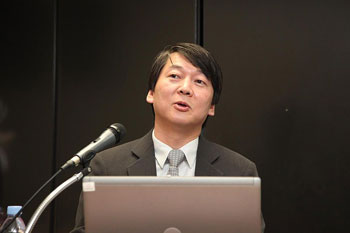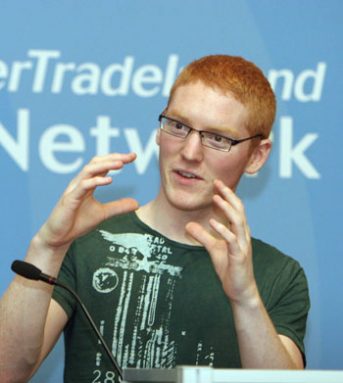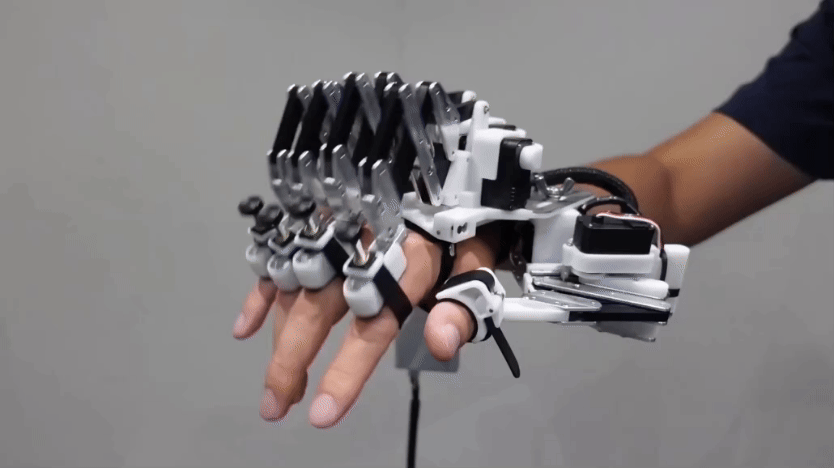Inspired minds: Role models come from across the globe
Young researchers describe people and ideas that kindled their interest in science, technology, engineering and math

A plasma-filled globe, a technology that Nikola Tesla helped pioneer at the dawn of the electrical age. Tesla was among famous figures in science and tech that inspired Broadcom MASTERS International students.
Marcelo César Augusto Romeo/ Flickr (CC BY 2.0)
Innovation can change a city, a country and even the world. It’s something even many teens and tweens appreciate. In May, two dozen of them from around the world shared stories about the people who had inspired them to dive into research.
These young researchers were all delegates to the 2015 Broadcom MASTERS International program. These students had previously completed outstanding projects in STEM subjects. (STEM stands for science, technology, engineering and math.)
The 12- to 14-year-olds met in Pittsburgh, Pa., during the Intel International Science and Engineering Fair (ISEF). The Society for Science & the Public (SSP) runs the Broadcom MASTERS, its international companion program and Intel ISEF. SSP also publishes Science News for Students.
While in Pittsburgh, the students visited an exhibition at the Senator John Heinz History Center. It was celebrating the role its hometown and the local region has played in pioneering a host of things.

Some innovators featured in the museum were favorites of the visiting young Broadcom MASTERS researchers.
Jonas Salk is a favorite of 13-year-old Raghav Ganesh from California. Salk made the first polio vaccine in 1952. Back then, the paralyzing disease infected about 50,000 children in the United States each year. Many of them died. Others became crippled for life. Salk’s vaccine would go on to protect millions of people. Indeed, it helped to eradicate the disease from the United States and much of the world. But first, “a lot of the work was actually done at a lab in Pittsburgh,” explains Raghav.

Tesla had been awarded U.S. patents in the field of motors, alternating current and power transmission. When Westinghouse learned about them, he bought the patents and hired Tesla to work for him. Broadcom International delegate Tiara Easley, 13, is a Pittsburgh native. She really likes Tesla’s big ideas, including that alternating current, or AC.
In AC power, the flow of charge switches back and forth. In contrast, the charge for direct current flows in one direction only. The advantage of AC is that transformers can change the voltage of electricity flowing in this way. Electric companies step up, or increase, the voltage to very high levels before it goes out from power plants. Doing that cuts down on energy losses as the current travels over long distances. But those high levels are very dangerous. Transformers then step down, or reduce, the voltage to safer levels before it enters homes and businesses.
Beyond Pittsburgh
Of course, Pittsburgh isn’t the only place with creative scientists and engineers. Jack Pollock, 14, points to fellow Englishman Frank Whittle, who developed the jet engine. “He changed the world,” says Jack, “because with propeller engines it was a lot more dangerous and uncomfortable to fly.”
Three teens from India have a high regard for countryman Chandrasekhara Venkata Raman. “He was on a cruise, and he wanted to know why water is blue,” notes 13-year-old Saad Nasser. That curiosity led Venkata Raman to discover how light scatters. The work won him a Nobel Prize in Physics in 1930.

Fifteen-year-old Sarah Leatherbarrow of Australia is proud of Howard Florey. This famous Australian shared a Nobel Prize in Physiology or Medicine in 1945 with Alexander Fleming and Ernst Boris Chain for their work developing the antibiotic penicillin. This medicine has saved many people who would have died from bacterial infections.
Kristyna Bednářová, 13, admires Otto Wichterle from her home country, the Czech Republic. (Czechoslovakia, which grew from its roots in Pittsburgh, split into the Czech Republic and Slovakia in 1993.) Wichterle invented soft contact lenses. These products would go on to spawn a multi-billion-dollar industry.

Thirteen-year-old Julian Ceballos Leyva of Mexico and 14-year-old Phoebe Chew Tingyu of Singapore are proud of industrial leaders from their respective countries. José Rivera was a leader in Mexico’s oil industry. And Olivia Lum’s company in Singapore builds desalination plants. They remove salt from seawater so that it’s safe to drink.
Hsing-ching Liu is a hero for 12-year-old Henry Kuo of Taiwan. The comic book artist has invented many items. One clever device is a self-sharpening pencil. “He is a role model for us to have a creative mind and to think outside the box,” says Henry.
Leaders in the Internet age
Other young Broadcom International researchers are proud of their country’s leaders in the Internet age. Ahn Cheol-Soo came up with the first computer antivirus program in South Korea. Antivirus programs protect people from hackers and others who try to sneak harmful software onto their computers. Ahn shared that program with others for free, notes 12-year-old Deun Sol Lee.

Fellow Irishman Patrick Collison is a hero for Adam Barry, 13. Collison and his brother founded two big Internet companies. One of them, called Stripe, handles online payments for businesses. That company is now worth billions of dollars. And Collison hasn’t even turned 30 yet!
Siyabulela Xuza of South Africa is even younger. “When he was a young child, he almost set his mother’s kitchen on fire when experimenting with homemade rocket fuel,” says 14-year-old Petrus Daniel Steyn from that country. Xuza kept working, though. In 2007, at age 18, Xuza won a $5,000 award at the Intel ISEF. Since then, he’s become the energy ambassador for Total South Africa, an energy services company.

Likewise, the electric grid needs work. Westinghouse and Tesla’s work helped get the industry where it is today. But our demand for energy is still growing. Meanwhile, pollution from electricity generation is a big problem. A more efficient grid could help deal with both issues.
Other fields need advances as well. And like this year’s Broadcom MASTERS International delegates, innovators — and innovations — can come from anywhere. It all starts with curiosity and an inventive spirit.
Maybe your own town is home to a famous future innovator. It may even be you!
Power Words
(for more about Power Words, click here)
aluminum A metallic element, the third most abundant in Earth’s crust. It is light and soft, and used in many items from bicycles to spacecraft.
antibiotic A germ-killing substance prescribed as a medicine (or sometimes as a feed additive to promote the growth of livestock). It does not work against viruses.
antivirus program Software designed to protect a computer from programs and malicious online sources that can disrupt a computer’s function or allow access to its data.
bacterium (plural bacteria) A single-celled organism. These dwell nearly everywhere on Earth, from the bottom of the sea to inside animals.
Broadcom MASTERS Created and run by the Society for Science and the Public, Broadcom MASTERS (Math, Applied Science, Technology and Engineering Rising Stars) is the premier middle school science and engineering fair competition. Broadcom MASTERS International gives select middle school students from around the world a unique opportunity to attend the Intel International Science and Engineering Fair.
current (in electricity) The flow of electricity or the amount of electricity moving through some point over a particular period of time.
crude oil Petroleum in the form that it comes out of the ground.
desalination The process of removing salt from water.
electric charge The physical property responsible for electric force; it can be negative or positive.
electric current A flow of charge, called electricity, usually from the movement of negatively charged particles, called electrons.
engineer A person who uses science to solve problems. As a verb, to engineer means to design a device, material or process that will solve some problem or unmet need.
grid (in mathematics or mapping) A network of lines that cross each other at regular intervals, forming boxes or rectangles, or an orderly field of dots that mark where each pair of lines intersect, or cross one another. (in electricity) The interconnected system of electricity lines that transport electrical power over long distances. In North America, this grid connects electrical generating stations and local communities throughout most of the continent.
lens (in optics) A curved piece of transparent material (such as glass) that bends incoming light in such a way as to focus it at a particular point in space. Or something, such as gravity, that can mimic some of the light bending attributes of a physical lens.
innovation (v. to innovate) An adaptation or improvement to an existing idea, process or product that is new, clever or more practical.
nerves Long, delicate fibers that communicate across the body of an animal. An animal’s backbone contains many nerves, some of which control the movement of its legs or fins, and some of which convey sensations such as hot, cold, pain.
paralysis The inability to willfully move muscles in one or more parts of the body. In some cases, nerves that carry the signal to move may have been severed or damaged. In other cases, the brain may be the source of the problem: It may fail to understand or act on a nerve’s signal to move.
penicillin The first antibiotic (although not the first one used on people), it’s a natural product that comes from a mold. In 1928, Alexander Fleming, a British scientist, discovered it could kill certain bacteria. He would later share the 1945 Nobel Prize in Medicine for it.
physics The scientific study of the nature and properties of matter and energy. Classical physics is an explanation of the nature and properties of matter and energy that relies on descriptions such as Newton’s laws of motion. It’s an alternative to quantum physics in explaining the motions and behavior of matter. A scientist who works in that field is known as a physicist.
physiology The branch of biology that deals with the everyday functions of living organisms and how their parts function.
pluripotent A term that means having many possibilities. In medicine, pluripotent is an adjective used to describe a type of stem cell that can mature into any other type of cell in the body.
polio An infectious viral disease that affects the central nervous system and can cause temporary or permanent paralysis.
pollutant A substance that taints something — such as the air, water, our bodies or products. Some pollutants are chemicals, such as pesticides. Others may be radiation, including excess heat or light. Even weeds and other invasive species can be considered a type of biological pollution.
robot A machine that can sense its environment, process information and respond with specific actions. Some robots can act without any human input, while others are guided by a human.
saline Salty or having to do with salt. The salinity of the ocean is a measure of its saltiness.
Society for Science & the Public (or SSP) A nonprofit organization created in 1921 and based in Washington, D.C. Since its founding, SSP has been not only promoting public engagement in scientific research but also the public understanding of science. It created and continues to run three renowned science competitions, including the Intel International Science and Engineering Fair (initially launched in 1950). SSP also publishes award-winning journalism in Science News (launched in 1922) and Science News for Students (created in 2003). Those magazines also host a series of blogs (including Eureka! Lab).
STEM An acronym (abbreviation made using the first letters of a term) for science, technology, engineering and math.
stem cell A “blank slate” cell that can give rise to other types of cells in the body. Stem cells play an important role in tissue regeneration and repair.
transformer A device that changes the voltage of an electrical current.
vaccine A biological mixture that resembles a disease-causing agent. It is given to help the body create immunity to a particular disease. The injections used to administer most vaccines are known as vaccinations.
voltage A force associated with an electric current that is measured in units known as volts. Power companies use high-voltage to move electric power over long distances.







